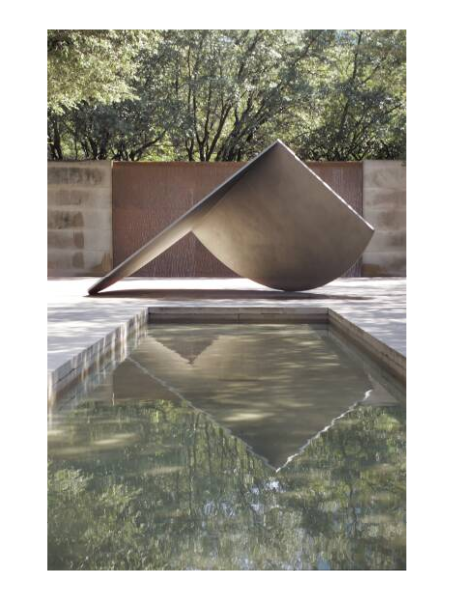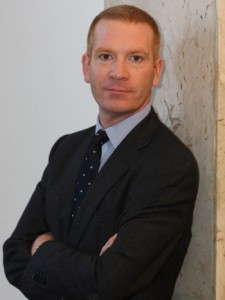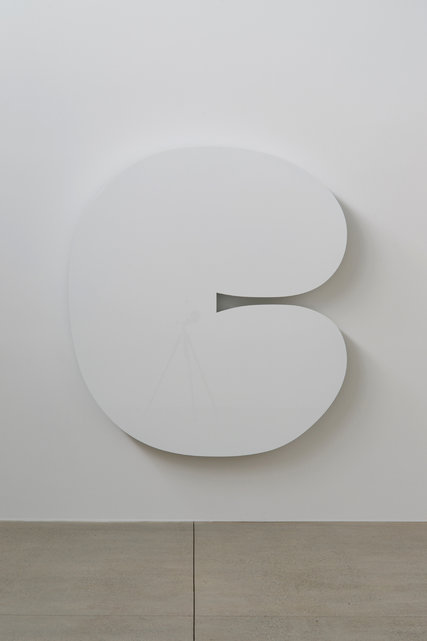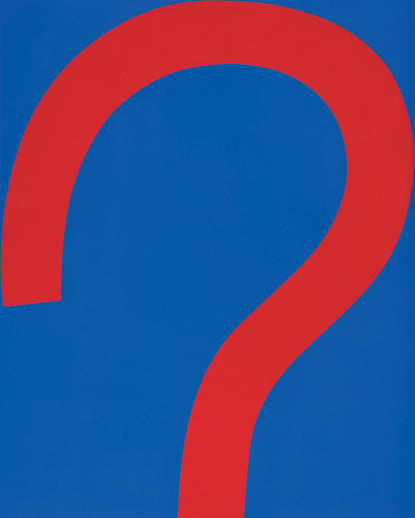DMA’s Gavin Delahunty Remembers Ellsworth Kelly
ArtandSeek.net December 30, 2015 32The art world lost a great this weekend when 92-year-old Ellsworth Kelly died in New Jersey. And Gavin Delahunty lost a friend. The senior curator for contemporary art at the Dallas Museum of Art has known Kelly for almost a decade, and often visited the artist in his studio. He recently contributed an essay to a thorough monograph of the artist’s work, published by Phaidon. And last year, Delahunty interviewed Kelly for Whitewall Magazine.
“In my mind, at least, the art historical lineage, it’s Matisse, Picasso, Ellsworth Kelly,” says Delahunty. “That’s how I felt every time I met him. So it was terribly exciting.”

“Untitled,” by Ellsworth Kelly at the Dallas Museum of Art. Photo: DMA
Kelly never stopped producing work.
“You only have to look at 2015, when I believe he was making some of the greatest paintings of his lifetime,” says Delahunty. Kelly had a solo show of new work in New York. He donated a new piece to Two by Two for AIDS and Art, the annual Dallas fundraiser and was honored, as part of it, with the AmfAR Award of Excellence For Artistic Contributions to the Fight Against AIDS. And in January, he had given the Blanton Museum of Art in Austin the design concept for “Austin,” the only freestanding building Kelly designed. The museum is raising money to construct it.
“He was 92 years of age. He was teaching us a lesson in how to excel in that period of your life.”
Kelly’s husband, Jack Shear, called Delahunty Sunday to share the news.

Gavin Delahunty.
“I just saw him in October,” says Delahunty. “He was in high spirits. He sent me a picture – in a way it was kind of a nice “ending” – he sent a picture of his Christmas dinner table. And I knew he had lots of friends around for Christmas dinner. A few days later, I thought what a nice ending. He loved eating. He was a great raconteur. So I’m sure he held court at Christmas dinner. And off he went.”
Delahunty stopped by the KERA newsroom to chat about Kelly, his contribution to 20th century art, and his special connection to North Texas. Here are some excerpts and outtakes from our conversation:
Ellsworth Kelly is being celebrated as one of the most regarded American artists of the 20th century. What makes his work so significant?
Well, Ellsworth Kelly had a profound impact on the development of the language of modern and contemporary art in the United States. And following his return from France in the 1950s, he brought with him a whole new language of how we approach line, form and color in relation to modern and contemporary art.
He was completely immersed in that very disciplined commitment to distilling the world around him into the most beautiful, pure shapes and color. And that has had an influence on many, many generations of artists.
Some without an art background might find his work very simple and straightforward. But it’s not.
No, and it’s an interesting approach. Because on the one hand, Ellsworth’s practice was about a distillation, making the shapes and geometries and lines of the world simple and understandable. And there’s a great work on display in the main concourse of the Dallas Museum of Art, a red panel from 1980. And as you pass it, it’s like a tiny fragment of the world that Ellsworth has grasped for us and enlarged it to an enormous scale.
This incredibly rich cadmium red color. You can’t help but be stopped in your tracks as you traverse the concourse and you see this shape. And it seems to remind you of something but you can’t quite put your arms around what it is completely.
And that is Ellsworth at his very best. The genius of just capturing something that evokes something deep inside, a memory, a thought something from our childhood, something from the past or even something from a potential future. And he’s re-presented it in a way that creates all these emotions inside oneself, but then leaves itself still open for interpretation.
Ellsworth was very much interested in that. He didn’t want his art to dictate or to force a “perfect” idea. It was always open for interpretation.

“White Form,” by Ellsworth Kelly, lives at Cowboys Stadium.
You can see Kelly’s work at the Dallas Museum of Art and the Fort Worth Modern. But he also has pieces at the Meyerson Symphony Center and even Cowboy’s Stadium. Why does his work fit on museum walls and in public spaces?
Why is it that architects and football team owners are as equally encouraged to have an Ellsworth Kelly? It is to do with that simplicity. Ellsworth gives us these shapes, gives us these colors. Almost everyone can instantly take something from it. But if you want to dive deeper into the art, to get to the complexities of how he conceives and delivers these things, that’s also an option too. So I think you can pass an Ellsworth Kelly and immediately feel something. And then there’s also this doorway in which you can dive in and get really deep inside the artist’s mind.

“Curved Red on Blue” by Ellsworth Kelly at Fort Worth Modern.
You knew him, right?
I had the great priviledge of knowing Ellsworth. He was one of the most gentle and humorous and kind and loving people I’ve ever had the opportunity to meet. How he understood and saw the world was very unique. And incredibly delicate and precise. And you could feel that when you were in his presence. I always knew, when I was with him, that it was very special and I should cherish those moments. And I did. And I visited him many times over the last 10 years. And we would eat together and drink together and just chat about everything, art but also literature. He loves contemporary dance. He loved nature. He was very interested in bird watching. And observed nature in a way that, he taught me something about how to view the world.
Kelly spent a lot of time in France. He was primarily based on the East Cost. But he seemed to have a special relationship with North Texas.
You only have to look at his connection with Texas in 2015. At the Blanton Museum of Art, at the University of Texas at Austin, they are working on “Austin,” which is this beautiful freestanding building that was designed by Ellsworth that is going to be completed for the Blanton in a number of years.
Ellsworth, of course, completed an incredible new artwork and donated it to this year’s Two by Two for AIDS in Art. This is an artist who is encumbered by similar requests all the time. And it was Dallas, and that particular relationship between AmfAR and the Dallas Museum of Art, that caught his attention.
And it filled him with pride to know that the Meyerson Center, the Dallas Museum of Art, private collections – there was an accumulation of great works in this area. That meant a lot to him.
Over the years, the decades, as Dallas and North Texas and Texas on a wider scale, had embraced him as an artist, he, toward the end of his life, and throughout his life, was constantly giving back to Texas.









